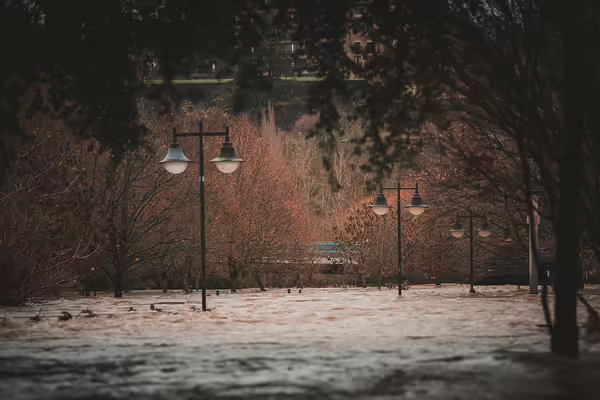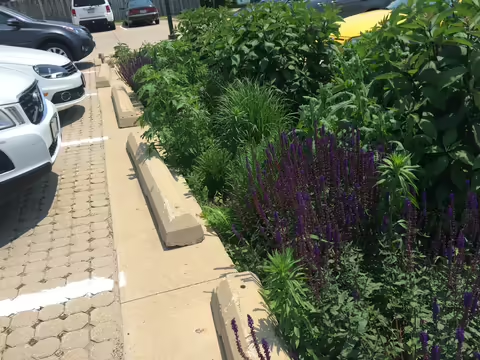
URBANA, Ill. – Life does not exist without water. Gardens don’t grow without water. But what happens when there is too much of a good thing? Or when that good thing is mismanaged and becomes a misfortune. Or when there are prolonged periods of drought?
“The tale of stormwater is more frequently a story of feast or famine,” says Emily Swihart, University of Illinois Extension horticulture educator. “Managing this resource onsite can have ripple effects downstream and throughout the watershed.”
Rain gardens, bioswales, permeable pavement, are all methods to slow stormwater and prevent floods.
Before Illinois was settled, it was covered in diverse ecosystems of prairies, woodlands, and wetlands. These features were connected through a vast network of river valleys and stream corridors. When rain fell, nearly all the water was absorbed into the soil where it was available for plant use or slowly percolated into groundwater.
Water that travels through the soil profile does so at a slower rate than water flowing on the surface. Water is cooled and filtered while traveling through the ground on its way to being discharged in a natural spring. The water that did exit the site as surface runoff, did so slowly, having to weave in and out of the stems of plant materials, minimizing the potential for erosion and flash flooding.
As human populations grew, large portions of natural ecosystems were converted into impermeable surfaced areas of rooftops, roads, and parking lots. Stormwater that falls on these areas cannot infiltrate into the soil, nor does it leisurely travel downslope. Stormwater on impermeable surfaces is quickly whisked away, traditionally toward a storm sewer.
“In large storm events, communities with combined storm and sanitary sewer systems can become overwhelmed and flood,” Swihart says.
Managing stormwater by channeling it can help minimize local flooding or water ponding but can compound challenges downstream. Furthermore, stormwater that is removed is no longer available during dry weather.
“Green infrastructure” systems more effectively manage stormwater and can help reduce runoff and capture rainwater onsite or close to where it falls. Many of these systems are beautiful and can easily be incorporated into existing landscapes. Multiple systems can be utilized for increased impact.
Rain gardens are a depression or shallow basin planted with native species to capture runoff from an identified source and hold it temporarily until the water slowly filters out. Most native plant species have vast root systems that penetrate deep into the soil profile and encourage water infiltration. Properly designed and installed rain gardens do not hold water for long periods of time. Rain gardens can be beautifully designed and can incorporate steppingstones for access, sculptures for aesthetic appeal, or a wide variety of plant forms for a personalized effect.
Bioswales, or stormwater swales, are similar to rain gardens. These shallow channels move water offsite. By design, the low slope and intentionally selected plant material move water slowly over the surface, increasing infiltration and filtering out contaminants prior to reaching a stream or storm sewer.
Permeable pavement or pavers allow water to move through the hardscape into a gravel layer beneath. Water can be stored in the gravel until it is evaporated back into the atmosphere, it can move through the subsurface slowly before discharging into a storm sewer or can be removed from the site through a pipe into a rain garden or bioswale.
Rain barrels and cisterns are containers that capture and store stormwater. Retained water is available for use during dry periods, typically to water landscape plants.
Incorporating green infrastructure into a home landscape is an excellent way to enhance aesthetic appeal while helping to better manage water resources. For more information, get in touch with horticulture staff at your local Illinois Extension office at go.illinois.edu/ExtensionOffice.
SOURCE: Emily Swihart, Horticulture Educator, Illinois Extension.
ABOUT EXTENSION: Illinois Extension, the public outreach and engagement arm of the University of Illinois, translates research-based knowledge into actionable insights and strategies that enable Illinois businesses, families, and community leaders to solve problems, adapt to changes and opportunities, make informed decisions, and carry technical advancements forward into practice.
PHOTO ACCESS: The photo in this article is available to download for media use.
